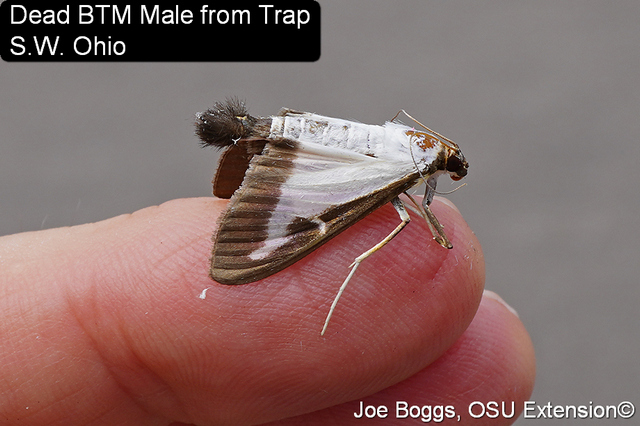REYNOLDSBURG, Ohio — The U.S. Department of Agriculture’s Animal and Plant Health Inspection Service has confirmed the detection of the box tree moth near the border of Hamilton and Clermont counties.
A local resident submitted a photo of the insect to the USDA earlier this month, resulting in trapping in the area. Two specimens captured were identified as the BTM.
The box tree moth is an invasive pest from East Asia that poses a threat to boxwood plantings and the horticulture industry. Boxwood is an important ornamental shrub that is a valuable part of Ohio’s nursery stock economy. Federal and state officials are asking the public and horticultural businesses to spot and report the box tree moth to the Ohio Department of Agriculture’s reporting tool.
ODA’s plant health inspectors and USDA staff will place additional traps and survey the area over the duration of the summer and fall to determine the source and extent of the population.
Residents can look for and report any signs of infestation by following these steps:
- Familiarize yourself with the insect’s appearance and signs of damage on boxwood shrubs.
- Check any boxwood plants you have for signs of box tree moth life stages.
- If you find any signs of infestation, take a picture, and report it.
Signs of feeding include chewed, cut, or missing leaves, yellowing or brown leaves, white webbing and green-black excrement on or around the plant.
Box tree moth caterpillars are green and yellow with white, yellow and black stripes and black spots. Adult box tree moths have brown and white color forms and are nocturnal.
The color form observed in Ohio has white, slightly iridescent wings, with an irregular thick brown border. The second adult color form is completely brown with a small white comma-shaped streak on the forewings. Males and females can show both colorations.
More information
For more information and photos, check out this resource from The Ohio State University.










